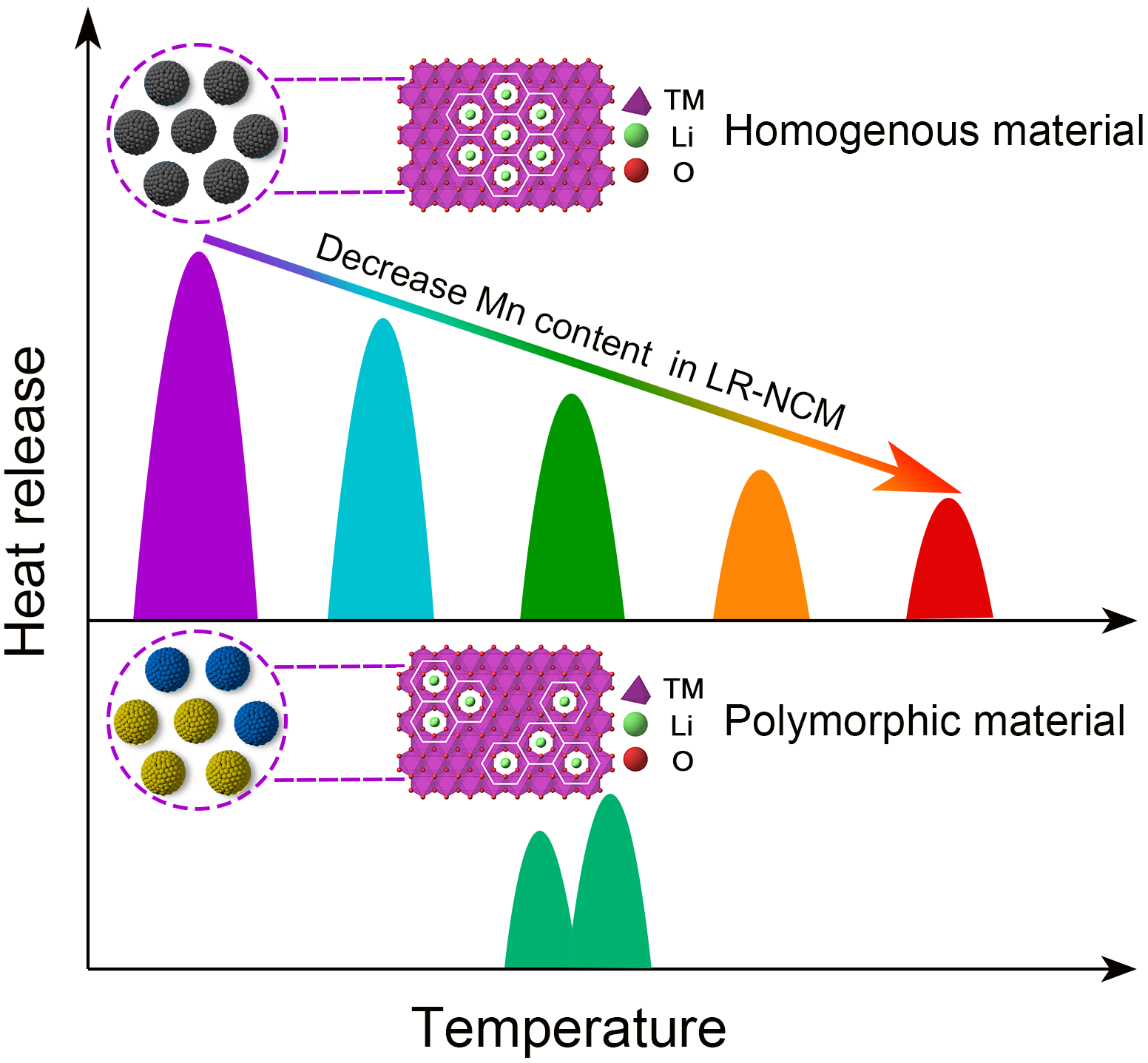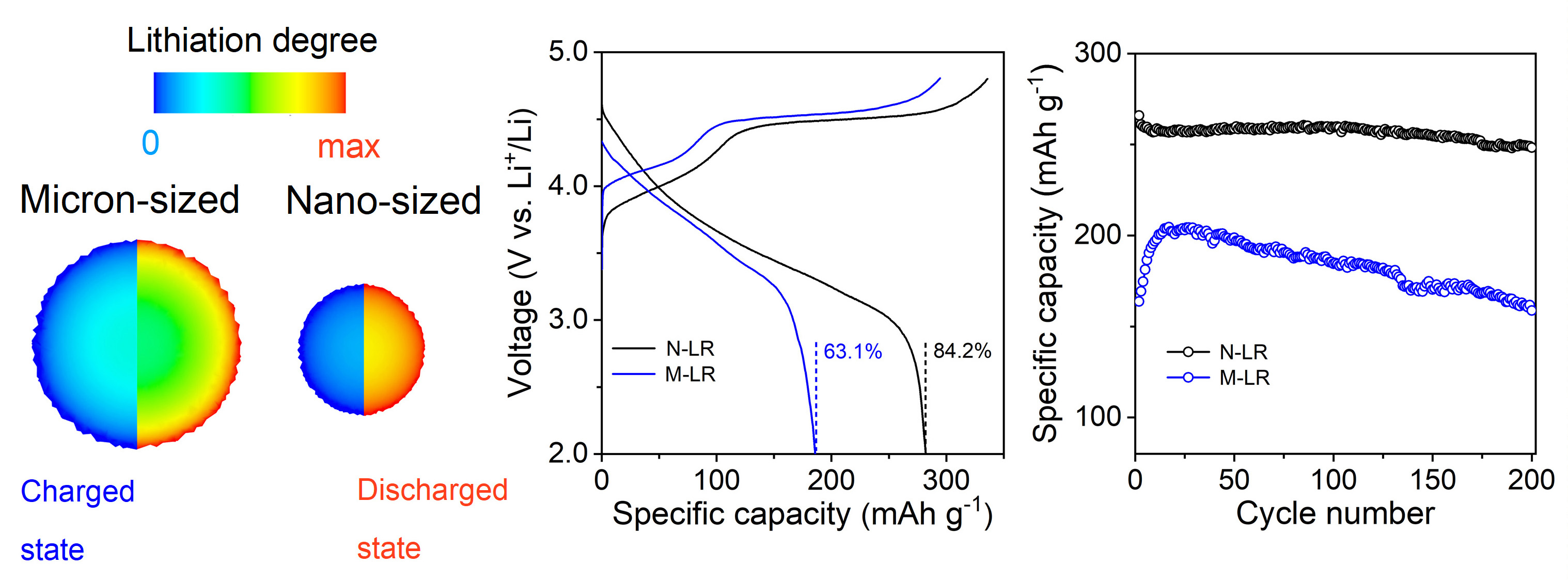In recent decades, lithium-ion batteries (LIBs) have commercially dominated the portable electronics market, and gradually evolved into the most encouraging market areas for electric vehicles (EVs).
Thanks to the discharge capacity over 300 mAh g-1, Li-rich Mn-based layered cathode materials have emerged as promising cathode materials for developing high-performance Li-ion batteries.
The Advanced Li-ion Battery Engineering Lab led by Prof. LIU Zhaoping at the Ningbo Institute of Materials Technology and Engineering (NIMTE) of the Chinese Academy of Sciences (CAS), has delved into the Li-rich Mn-based layered cathode materials, yielding a series of remarkable research progress.
In the study published in Materials Today, the researchers have tested the safety performance of Li-rich layered cathodes.
The analysis results revealed that the thermal-runaway temperature of Li-rich Mn-based layered cathodes decreases as the Mn content increases.
Furthermore, high Mn content in Li-rich layered cathode materials contributes to a high discharge capacity, but leads to a reduction of the thermal stability and an acceleration of the oxygen release.
By virtue of these findings, a polymorphic composition was designed for Li-rich layered cathode material that can reach an excellent balance between the energy density and thermal stability.

Fig. 1. The thermally stable polymorphic layered cathode materials. (Image by NIMTE)
In addition, the available capacity in a low Li-ion diffusion coefficient is sensitive to the change of grain sizes, ranging from micron-size, and submicron-size to nano-size, according to the study published in Energy Storage Materials.
Compared with submicron-sized and nano-sized Li-rich layered cathode materials, the materials with micron-sized grains show a superior crystallinity and a higher Li-ion diffusion coefficient.
However, the increased diffusion distance results in an extremely uneven Li-ion concentration distribution during the charge-discharge process. Consequently, the strain stress inside the grains accumulates, leading to an unsatisfied capacity retention and a rapid voltage decay.
This insight on the kinetic limitation of Li-ion diffusion in Li-rich layered oxides may shed light on the modification of Li-rich Mn-based layered cathode materials for high-performance LIBs.

Fig. 2. The kinetic limitations of Li-ion diffusion in Li-rich layered oxides. (Image by NIMTE)
Contact
QIU Bao
Ningbo Institute of Materials Technology and Engineering
Email: qiubao@nimte.ac.cn

